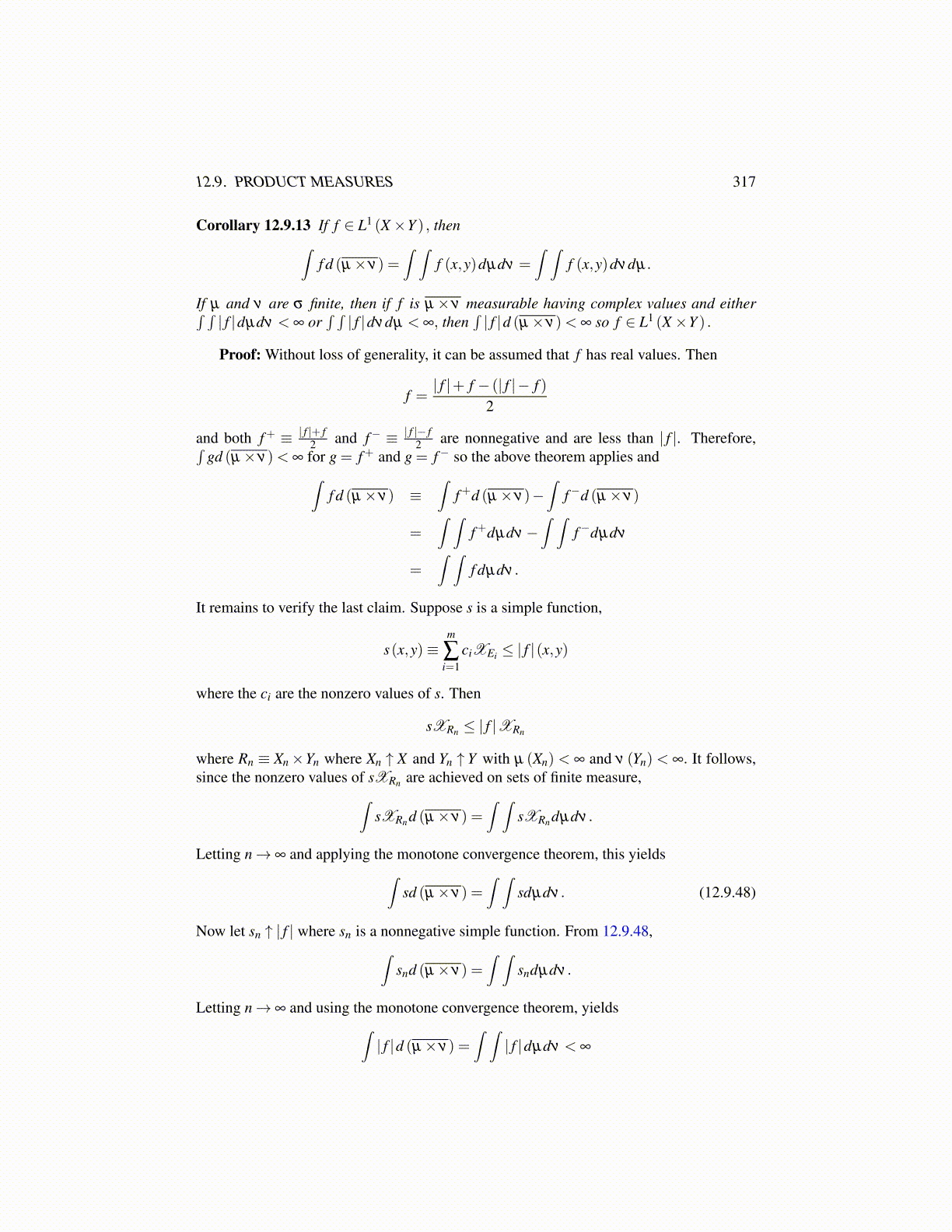
12.9. PRODUCT MEASURES 317
Corollary 12.9.13 If f ∈ L1 (X×Y ) , then∫f d (µ×ν) =
∫ ∫f (x,y)dµdν =
∫ ∫f (x,y)dνdµ.
If µ and ν are σ finite, then if f is µ×ν measurable having complex values and either∫ ∫| f |dµdν < ∞ or
∫ ∫| f |dνdµ < ∞, then
∫| f |d (µ×ν)< ∞ so f ∈ L1 (X×Y ) .
Proof: Without loss of generality, it can be assumed that f has real values. Then
f =| f |+ f − (| f |− f )
2
and both f+ ≡ | f |+ f2 and f− ≡ | f |− f
2 are nonnegative and are less than | f |. Therefore,∫gd (µ×ν)< ∞ for g = f+ and g = f− so the above theorem applies and∫
f d (µ×ν) ≡∫
f+d (µ×ν)−∫
f−d (µ×ν)
=∫ ∫
f+dµdν−∫ ∫
f−dµdν
=∫ ∫
f dµdν .
It remains to verify the last claim. Suppose s is a simple function,
s(x,y)≡m
∑i=1
ciXEi ≤ | f |(x,y)
where the ci are the nonzero values of s. Then
sXRn ≤ | f |XRn
where Rn ≡ Xn×Yn where Xn ↑ X and Yn ↑ Y with µ (Xn) < ∞ and ν (Yn) < ∞. It follows,since the nonzero values of sXRn are achieved on sets of finite measure,∫
sXRnd (µ×ν) =∫ ∫
sXRndµdν .
Letting n→ ∞ and applying the monotone convergence theorem, this yields∫sd (µ×ν) =
∫ ∫sdµdν . (12.9.48)
Now let sn ↑ | f | where sn is a nonnegative simple function. From 12.9.48,∫snd (µ×ν) =
∫ ∫sndµdν .
Letting n→ ∞ and using the monotone convergence theorem, yields∫| f |d (µ×ν) =
∫ ∫| f |dµdν < ∞